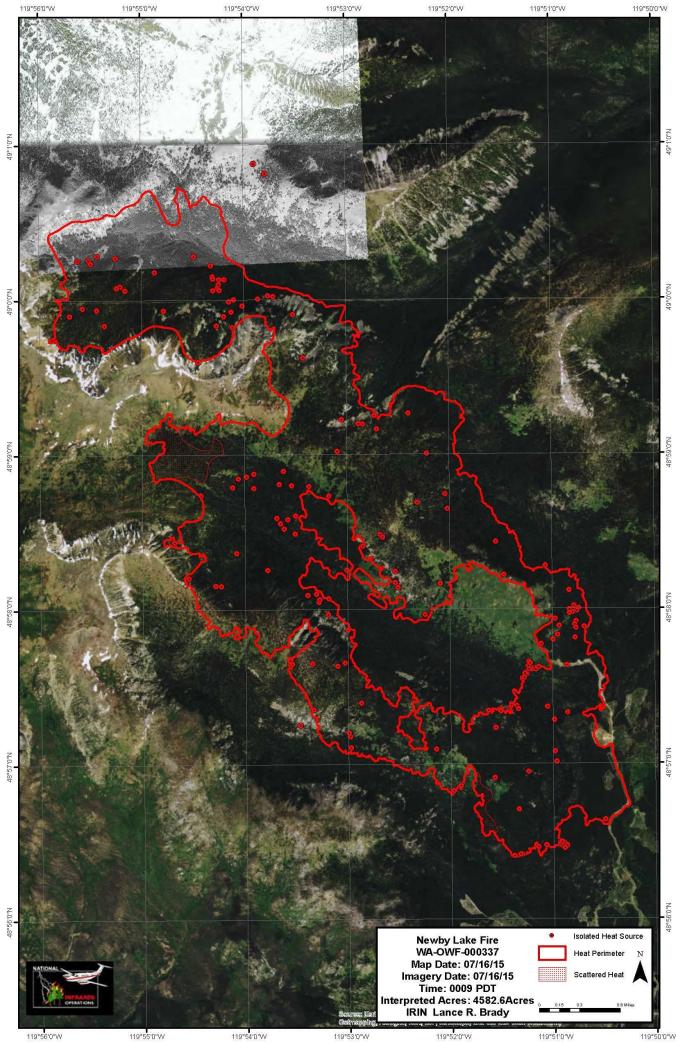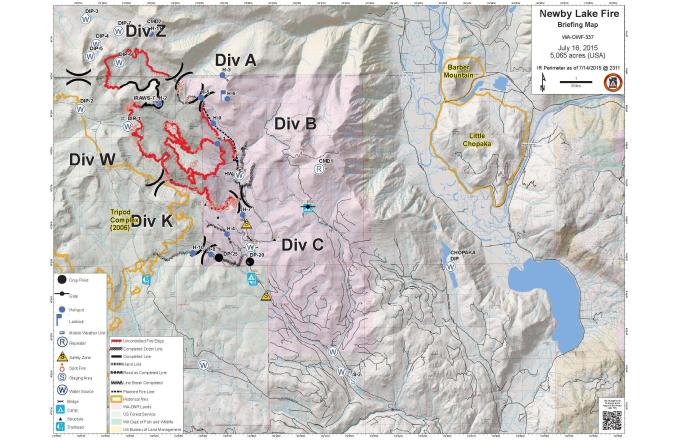Incident Overview
Firefighters have taken advantage of cool and moist conditions over the past few days to make significant progress in building and securing fire lines. Crews in Canada crews will complete mop up and return to base camp when wind conditions permit helicopter flights. On the east flank of the fire firefighters continue to locate and mop up hot spots with the aid of palm infra-red devices In the southeast area, crews will continue securing the 4000 road. Plumbing is complete with hose lays and pumps on the south end, but many hazard snags will be removed to improve fire lines.Crews will continue to build contingency lines in the Branch Creek and Nine Mile Drainage. Winds out of the north-northwest are expected to peak today and give way to a significant warming and drying trend this weekend.
Basic Information
| Current as of | 7/17/2015, 7:13:37 PM |
|---|---|
| Incident Type | Wildfire |
| Cause | Lightning/natural |
| Date of Origin | Thursday July 02nd, 2015 approx. 01:00 PM |
| Location | 12 miles NW of Loomis, WA. |
| Incident Commander | Ed Lewis – PNW 3 |
Current Situation
| Total Personnel | 504 |
|---|---|
| Size | 5,065 Acres |
| Percent of Perimeter Contained | 20% |
| Fuels Involved | Timber (Grass and Understory). |
| Significant Events | Fire behavior is minimal. It includes creeping, isolated torching and smoldering. |
Outlook
| Planned Actions | Division A/Z: Aerial patrol.Division B: Identify heat sources and mop-up as appropriate.
Division C: Utilize a combination of direct line and cold trail methods west of the 4000 road to the North Fork of Toats Coulee Creek in order to check fire spread within the existing perimeter. In addition, prepare control lines for potential burnout operations. Identify alternate and contingency options. Division K: Improve indirect control line from the end of the 4512 road out to the Tripod Fire area. Prepare control lines for potential burnout operations. Contingency Groups 1 & 2 are constructing contingency lines to the south and east of the fire along Nine Mile Road and Branch Creek Drainage. |
|---|---|
| Projected Incident Activity | 12 Hours: Low spread potential, creeping and a few isolated torching trees. Spotting should be minimal.24 Hours: Elevated fire activity possible with warming and drying. Isolated torching and short range spotting.
48 & 72 Hours: Isolated torching and short range spotting Anticipated after 72 Hours: Increased fire activity with continued drying and diurnal winds. Single tree and small group torching possible with short range spotting. |
| Remarks | The figure of 5,065 acres accounts for acres within the United States. |
Current Weather
| Weather Concerns | Strong gusty winds today hampered aviation operations. Winds are expected to ease through the evening. Above normal temperatures and lower relative humidity levels over the weekend with poor relative humidity recoveries at night. Increasing fire behavior is expected, but winds will return to diurnal flows. Humidity predicted to drop below 25% on Monday. |
|---|








